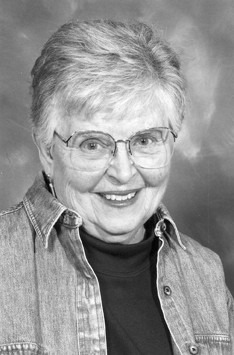Rabbitbrush Rambler: Saddle up

The old cowhands from the Rio Grande and their wives and kids and grandkids and great-grandkids are heading to the rodeo.
First there’s the parade, of course, and the Valley has some good ones with flags and bands, floats and princesses, marshals and merchants, school alumni and political candidates. One of my favorites took place at Manassa last weekend, and Monte Vista’s is coming up next.
Mostly, everyone loves the rodeos and memories of the Old West, even though they are pretty hard to remember some days. Or you can visit the ProRodeo Hall of Fame & Museum of the American Cowboy in Colorado Springs to get a fix.
Old West entertainment has been going on for longer than the Old West did. Turn back the clock to the 1880s, and crowds were flocking to Buffalo Bill’s Wild West Show. Starting with a parade and lots of horses and trick riders, Old West reenactments, cowboys-and-Indians fights with the Indians always losing, stagecoach holdups and the cavalry arriving to save the fair damsel, the Battle of the Bighorn with Custer being memorialized as a hero, Annie Oakley demonstrating her sharpshooting, and William Cody himself on his fine horse. You can visit his grave and museum on Lookout Mountain near Denver if you have forgotten him.
Cheyenne Frontier Days got started in the 1890s, and this is still going on. It’s the oldest rodeo in this country.
Ski-Hi Stampede at Monte Vista, the oldest professional rodeo in Colorado, will be 97 years old. This year firefighters will be especially honored in the parade, and justly so. Then head to Ski-Hi for the bull wrestling and bull riding, bronc riding and barrel racing, calf roping and mutton busting, and a lot more.
The Valley’s other towns have rodeos, too, with Alamosa’s PRCA RoundUP having kicked things off in June with a bang and ending with belt buckles. Carnivals add to the crowds and the cotton candy.
Rodeos began as a way for lonely, bored vaqueros to enjoy contests, doing for fun what they normally did for work and showing off their skills. The contests started in Spain and the Mediterranean area, maybe on the island of Crete.
Real ranch work, like rodeos, is not for sissies. They spend a lot of time splicing fences and rotating cows from one pasture to another, but in the old days there were the legendary trail rides, gone but not forgotten, until the iron horses shortened the trip.
Tools of a vaquero’s and a cowboy’s trade were his reata, lasso, or rope. The espuela or spur. The marca or brand. The cera or fencc. The vacas and toros cows and bulls. And when the vaqueros and cowboys got down for a chat or a rest, they were cooling their sillas or saddles.
Livestock and rodeos came to Mexico with the Spaniards, and from there they moved north to Texas and the Southwest and soon met up with American livestock owners who wanted the same land for their own Manifest Destinies.
That era is what we think of as the real Old West. Wild West shows, rodeos, novels, and Hollywood kept the myth alive after people had cars and trucks, TVs and RVs, while entertainers still were making money selling the romantic legends and enshrining guns and gunplay as the sacred symbols of their myths.
John Wayne? In reality, the Duke was a tall Iowa farm boy named Marion Morrison who went to Hollywood, cultivated sort of a drawl and a distinctive way of walking, and made a lot of money for the industry and himself. Somehow I doubt he ever was in a rodeo, and I never heard anything about his skill on a target range. Outside the studio, he lived at a marina and owned a yacht. Well . . .



